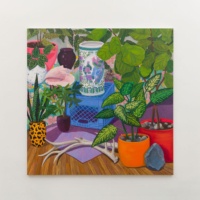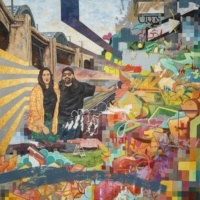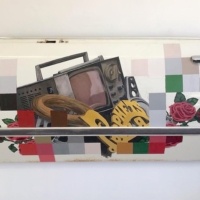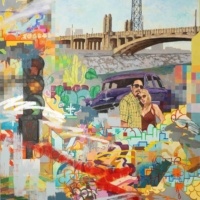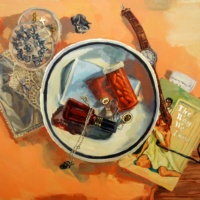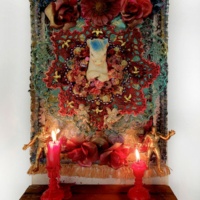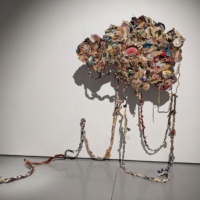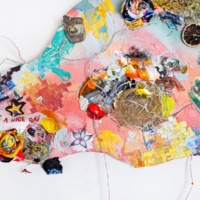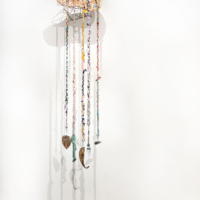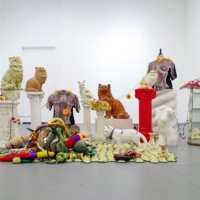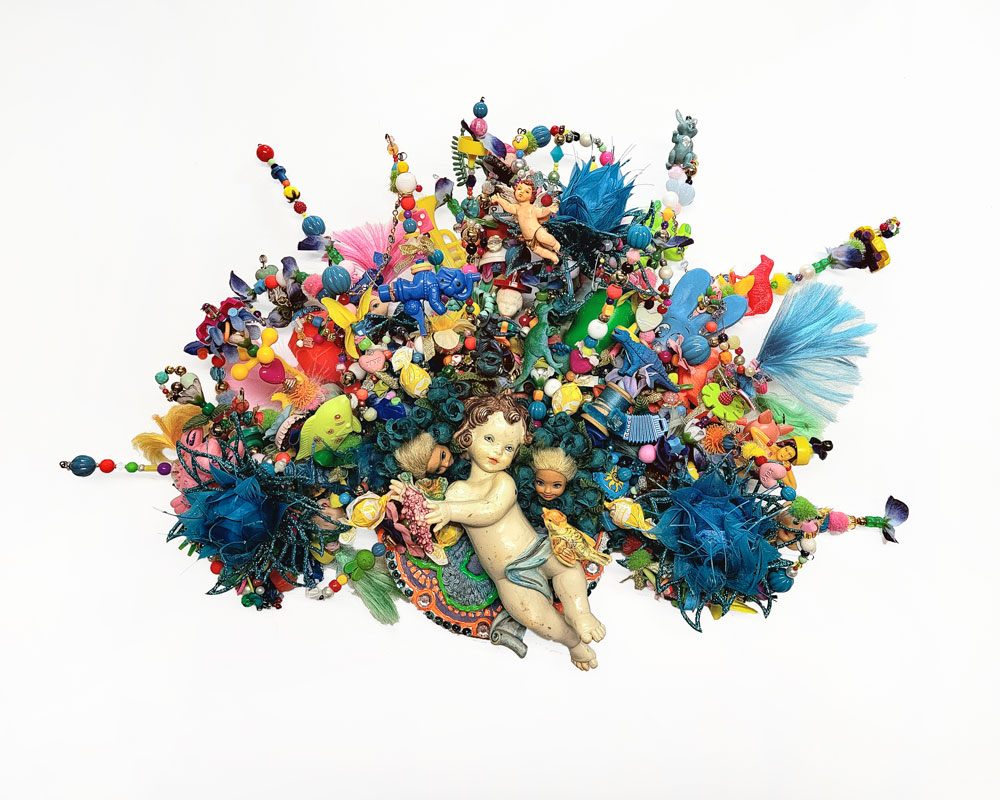
- Jacqueline Valenzuela
- Mandy Cano Villalobos
- Tessie Salcido Whitmore
- Julia Emiliani
- Melora Garcia
- Anna Valdez
Exhibit explores home displays for Chicanos and maximalists in US
U. La Verne show includes paintings, assemblage, and installations
(LA VERNE, Calif. – Oct. 6, 2023) An exhibit celebrating eccentric display culture in American life will run from Oct. 31 through Nov. 30, 2023 in the Harris Gallery of Fine Art at the University of La Verne, titled “Cluttercore,
In two seemingly different cultural communities, DIY-built displays for curated collections that reflect the lives and stories of their creators compete for breathing room. In both, recycled materials, found objects, and mass-produced kitsch find new meaning when carefully recontextualized as expressions of memory and identity.
Rasquachismo is a life outlook and artistic style originating from the Chicano (Mexican-American) communities of the American south west. Philosophically, it describes the mindset of beautifying from what little resources are available, repurposing everyday objects into new meaning or new life. It is surpassing survival into a thriving collective and placemaking from left overs. Often described as trashy, this aesthetic pairs arbitrary colors with often glorious excess. It could be a private altar in a hallway, a giant mural in an underpass, or an empty butter tub filled with salsa.
While rasquachismo has generations of history and expression, cluttercore is a newly recognized movement, with a basis in maximalist design aesthetics. Reminiscent of cabinets of curiosity, cluttercore’s sentimental interiors present found objects, familial memories, and curated kitsch. Crowded walls surround the creator with literally all the things make them happy.
In both instances, the designs and displays are a presentation of self; they are deeply linked with community and identity. The work in this exhibit touches the intersection of the two styles, visually highlighting their overlaps. Grand Rapid-based artist Mandy Cano Villalobos presents assemblages of mass-produced kitsch that meld pretty with beautiful-grotesque. Melora Garcia sculpts repurposed material into commentaries on familial memory and the dangers of the Anthropocene. Illustrator and designer Julia Emiliani contributes paintings of objects that link personhood representation with the things people cherished. Tessie Salcido Whitmore’s installation is process-based in her methodical collecting of antique materials, combined with pedestals as enduring methods of monumentalization. A still life by Anna Valdez doubles as a vanitas of old but recontextualized as utilitarian plastic and mass production of today is transfigured into objet d’art. Low-rider enthusiast Jacqueline Valenzuela’s art reuses car parts and elevates street culture to large-scale montages out of oil and acrylic.
The gallery is located in the Landis Academic Center at 1950 Third Street, La Verne campus. It is open from 11 a.m. to 4 p.m. Monday through Thursday or by appointment. For more information please visit https://artsci.laverne.edu/art/exhibition.
Artist Reception: Tuesday, November 14, 6-8 p.m.
Media Note: Images are available. Contact Dion Johnson at djohnson@laverne.edu
Gallery


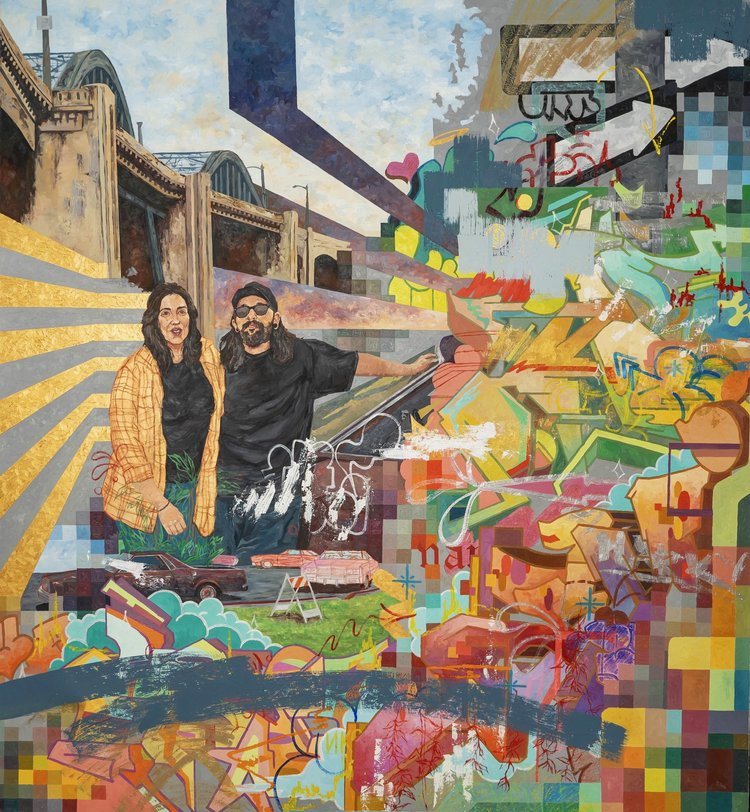
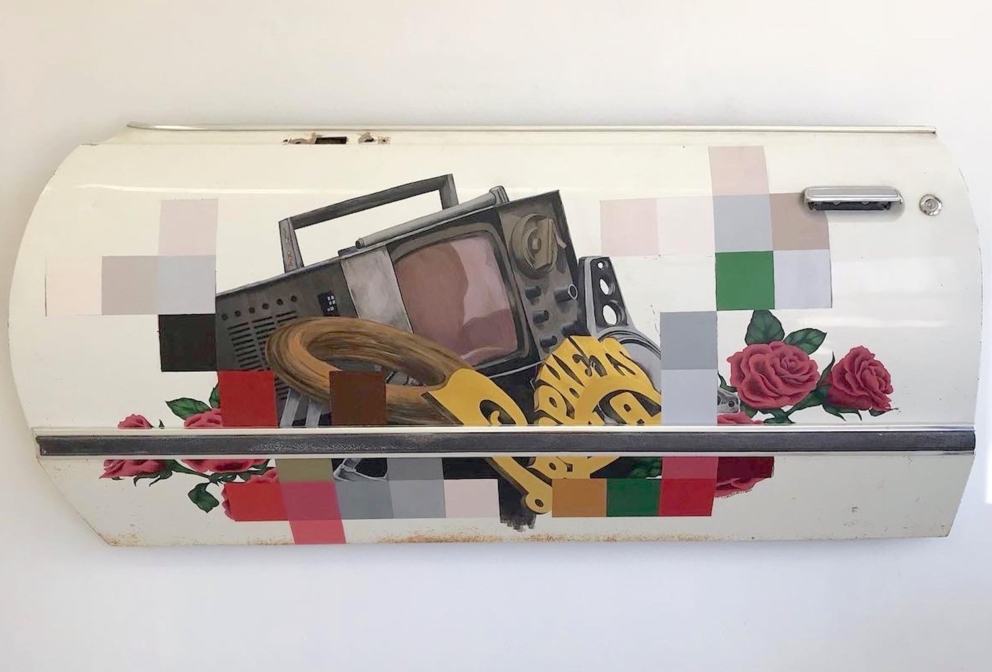
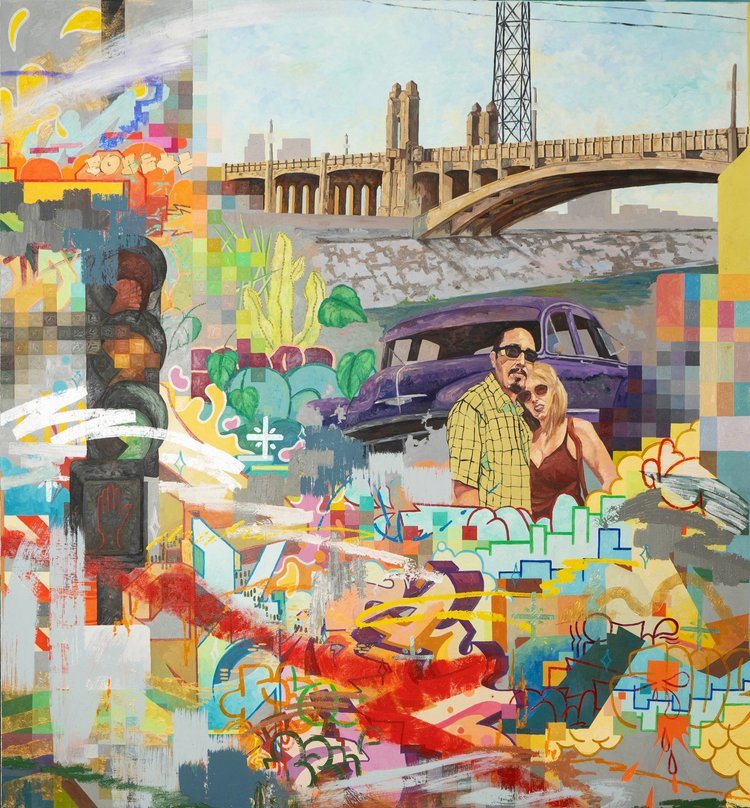
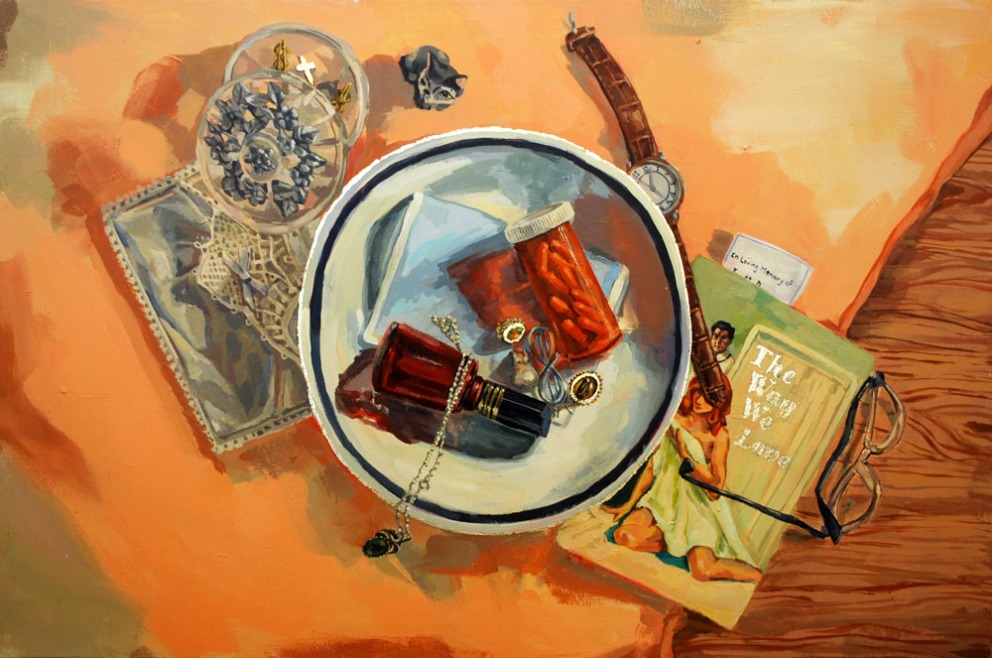

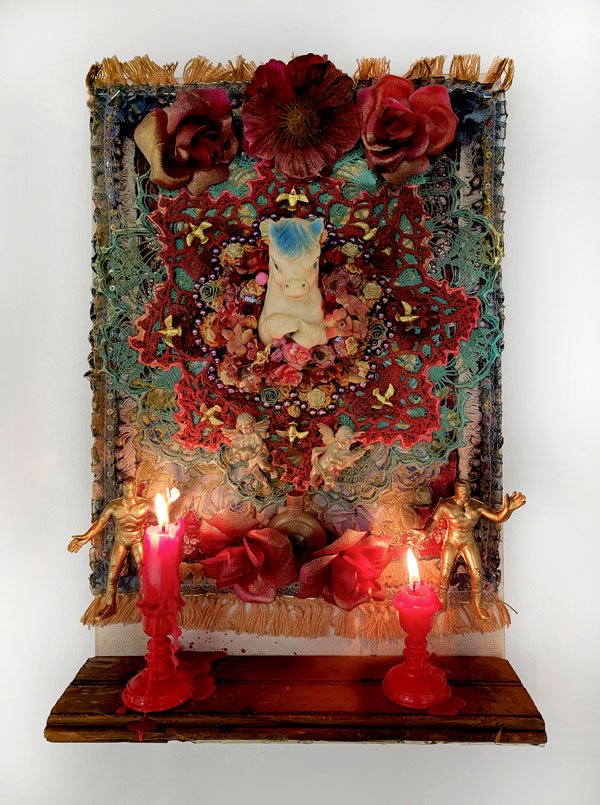

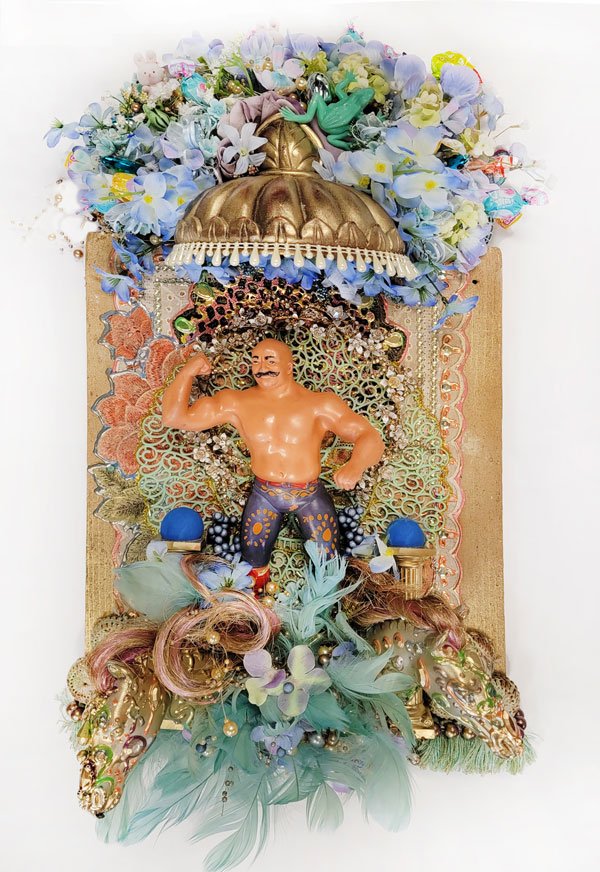
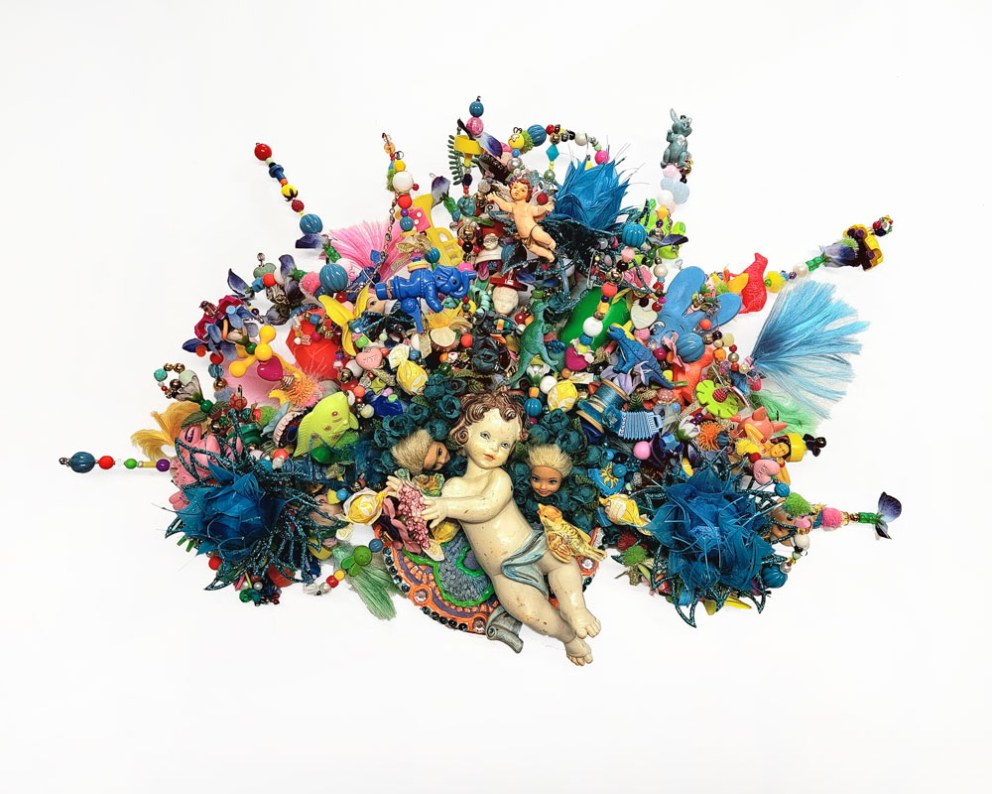
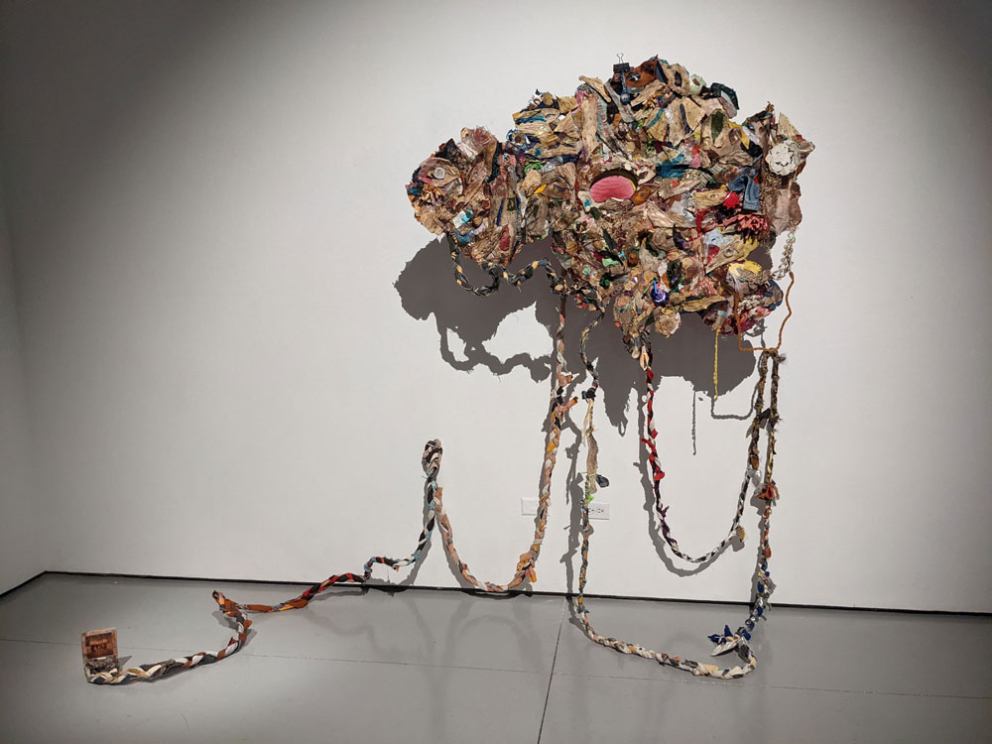
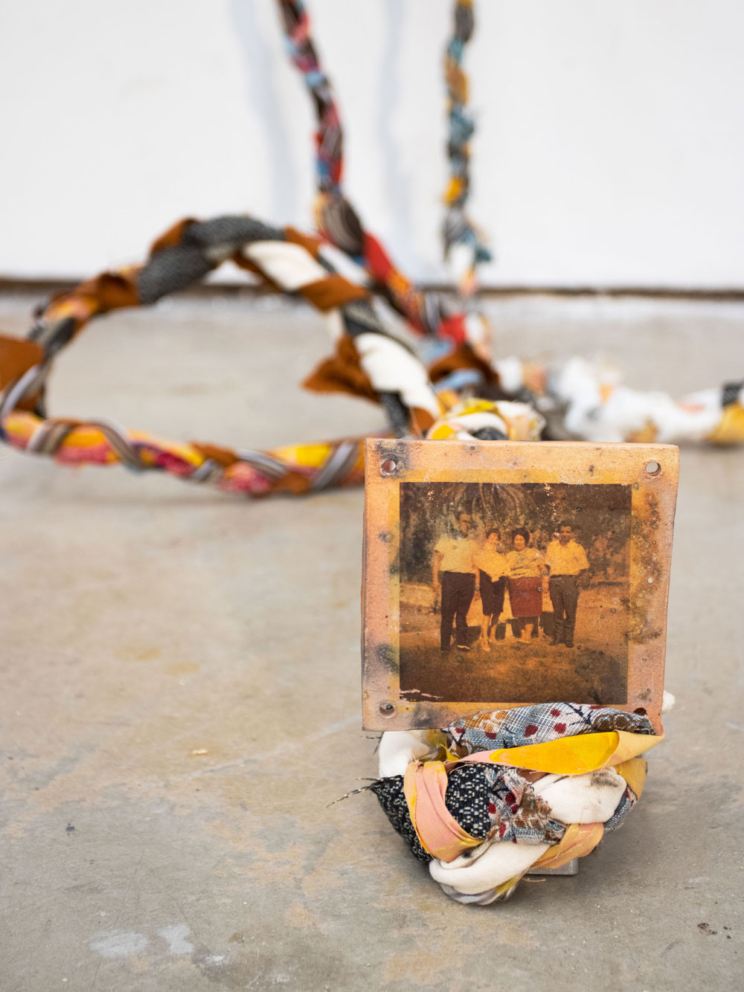
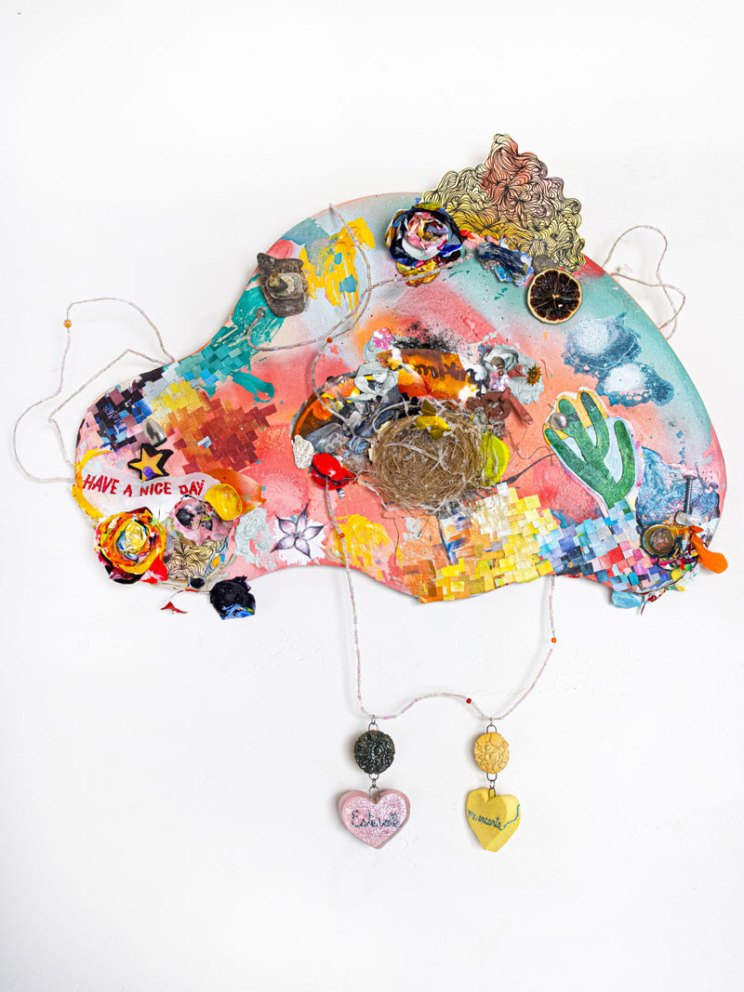

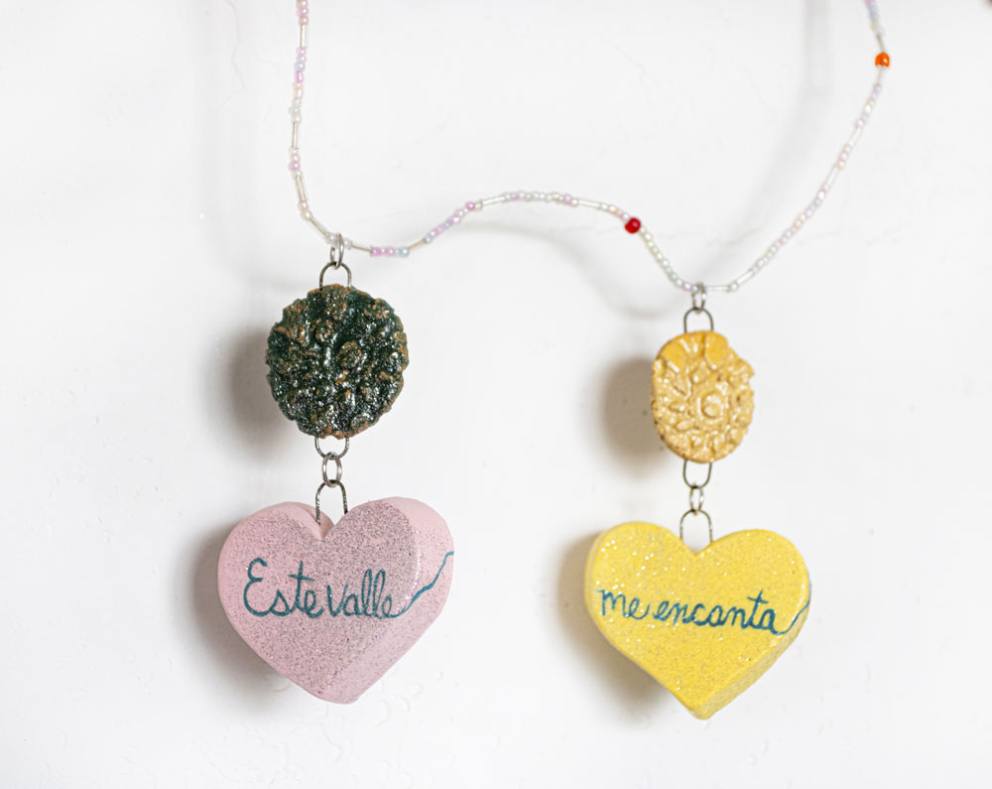

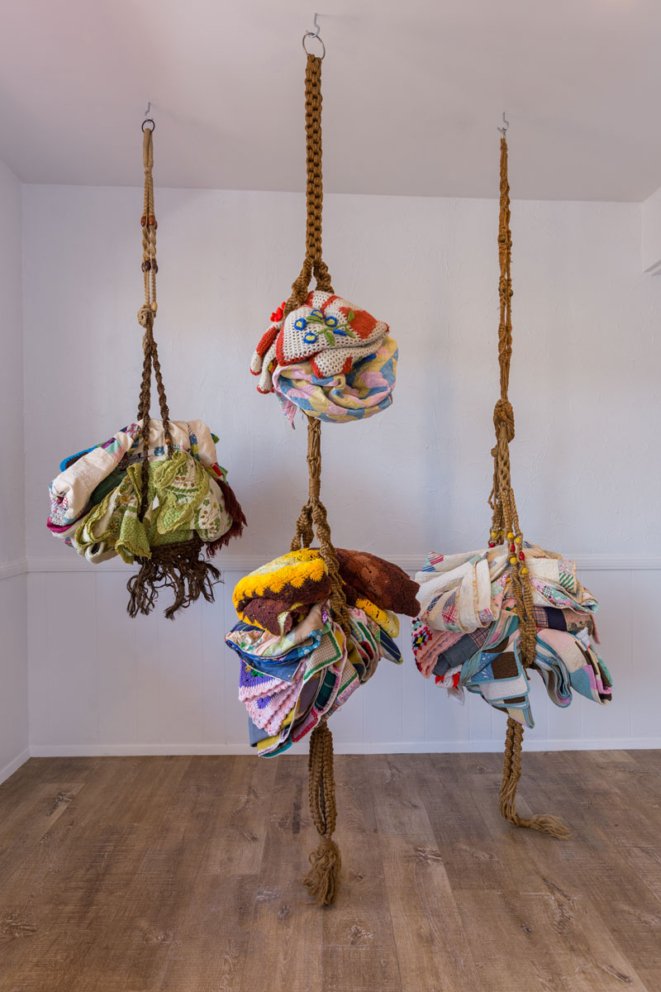
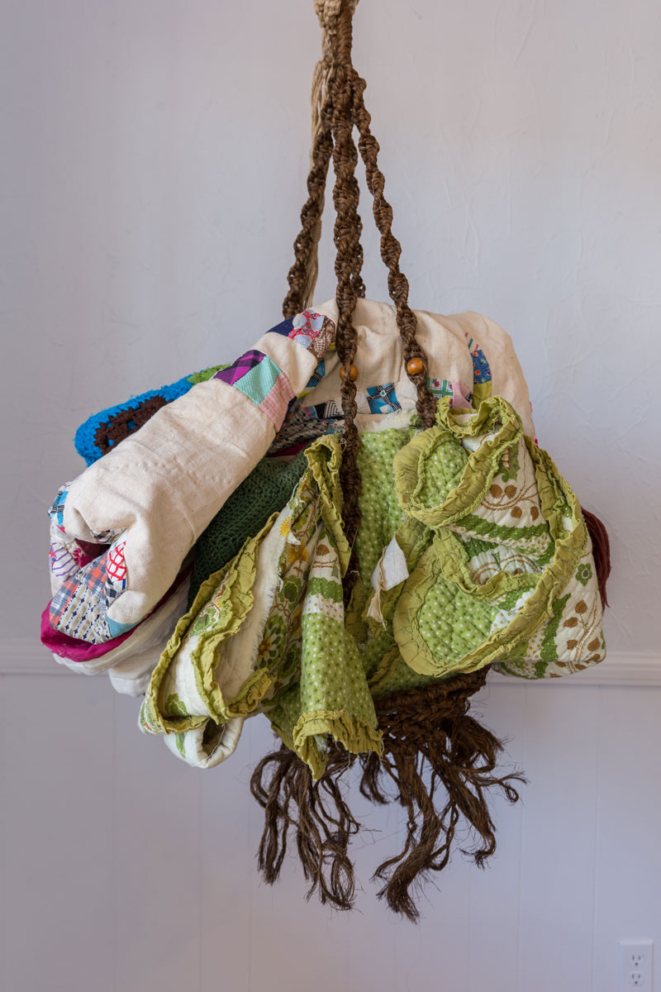
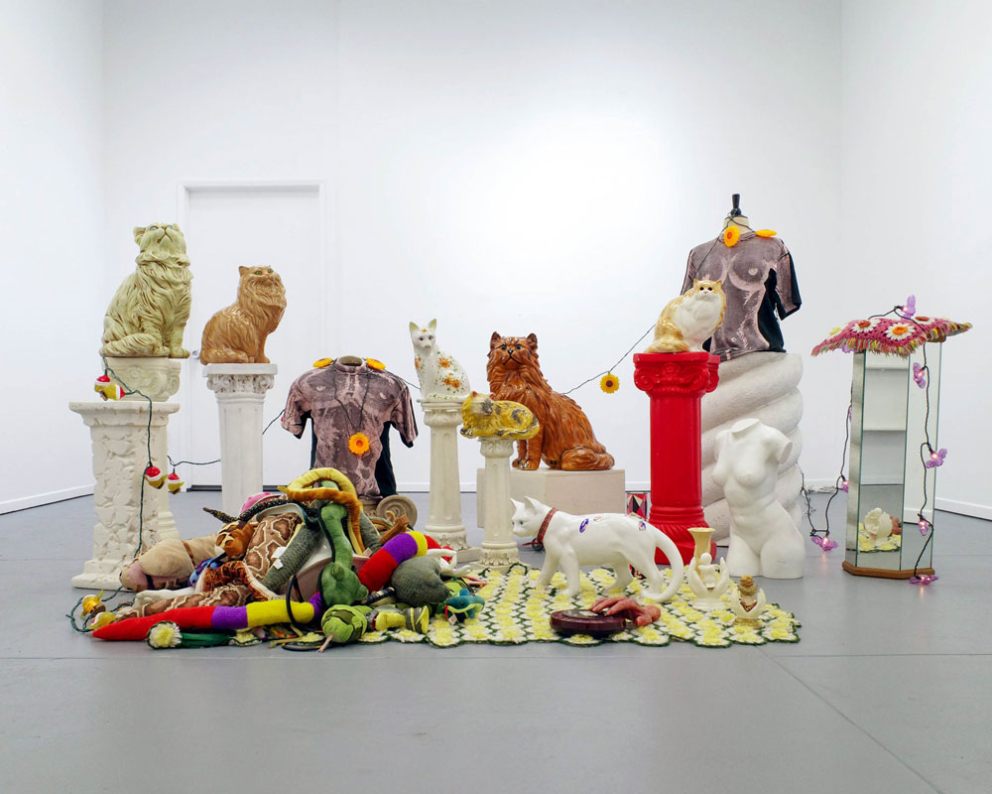
Artist Bios:
Grand Rapids, MI artist Mandy Cano Villalobos is recognized for installation, process and performance-based work that interrogates the imprint of human history through everyday objects and perils of the feminine. She labors with community narratives and the cult of exhibition, and has exhibited in Berlin, New York, and Puerto Montt, Chile, among others.
Indigenous and Chicana artist Melora Garcia was raised in the Coachella Valley, and is a current MFA student at CSUN. She weaves traditional handicraft, familial stories, and pain as a steppingstone to positivity into works that are equally as likely to be molded from metal as organic material. She was recently featured at the Armory Center for the Arts and in the Mexicali Biennial.
Julia Emiliani is an illustrator and designer based in Boston, MA, who has designed work for clients as diverse as Google, Prada, Hermès, Harvard University, and the Boston Celtics. Her work often concerns the physical manifestations of memory keeping, and objects as an extension of self.
Repurposing found objects and mass-produced home goods, Tessie Salcido Whitmore considers counter-culture, New Age religion, and constructs of femininity in her installations and sculptures. Her works has been presented internationally, and she is the recipient of the Albert B. Friedman Grant Award. She currently lectures in drawing and painting at San Diego State University.
Anna Valdez’s monumental still lifes weave the presentation of objects with cultural formation and collective consciousness. Her work has been featured in publications such as The New York Times and Juxtapoz, and is held in public collection such as the American Museum of Ceramic Arts and the Xiao Museum in China.
Jacqueline Valenzuela is a multi-media artist who uses her personal experience in the low-riding community of Southern California to elevate underrepresented Chicano arts. Her work focuses on portraiture and urban landscapes through vivid contrasting color pixelations. Her work has been exhibited across the US, with an upcoming solo exhibit at the Bakersfield Museum of Art.
